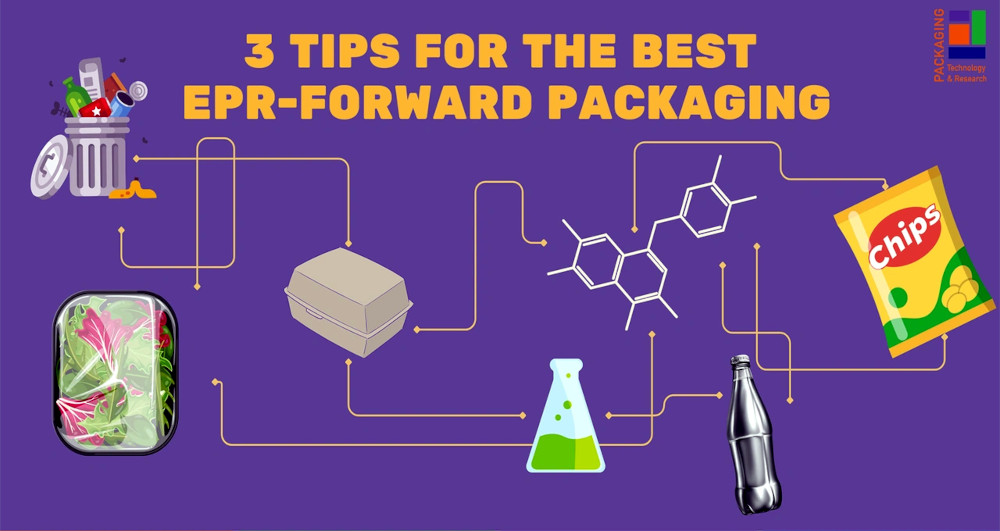Awareness of the need for us to transition to a circular
economy from our current, linear
one for the long-term livability of our planet has grown — but the
practicalities of such a massive shift are a cause for consternation for many
organizations.
How to move from theory to practice has been explored throughout the
week here
at SB’24 San
Diego — and a Monday afternoon workshop showcased the value of circular
certification and examples of how brands have turned theory into action.
Keep me in the loop: Proven strategies for integrating circular practices and designing circular products
 Aora Mexico has engineered 100% plastic-free packaging, with recyclable and biodegradable components | Image credit: Aora Mexico
Aora Mexico has engineered 100% plastic-free packaging, with recyclable and biodegradable components | Image credit: Aora Mexico
Moderator Ren DeCherney, Global
Lead for Built Environment at the Cradle to Cradle Products Innovation
Institute, underlined the importance of third-party
verification and certification in offering brands an “actual path from linear to
circular — through sourcing, design and systems,” The Cradle to Cradle
Certified Product Standard enables companies to take measurable steps, from
silver to gold to platinum, DeCherney explained. It’s a framework that
encourages brands to ask themselves fundamental questions about their products —
including what source materials are being used, whether they are safe, whether
they can be recycled, and whether the infrastructure exists to recycle, reuse or
repurpose at their end of life.
Panelist William Paddock is a
self-described “sherpa” helping companies navigate circular certification with
WAP Sustainability Consulting. He warned that
while certification can add brand value, its important brands know how to use
it. “Just because you have the tools doesn’t mean you know what to do with
them,” he said. “It’s important to find ways to communicate with key customers
and get the credit; that’s where the return on investment starts to stack up.”
While achieving a circular economy can be complex, the panelists were keen to
show that ‘going circular’ can also be fun — even beautiful. Nour
Tayara, CEO and co-founder of
beauty brand Aora Mexico, is proud to be shaking
up a sector which is as difficult as any to transform. Most products contain
multiple materials all glued together, making it impossible to recycle them.
“Most beauty brands believe that black plastic is chic! But it’s not
recyclable,” he pointed out. “And most products, like lipsticks, are so small
they can’t be recycled either.”
By making use of recycled aluminum, the company has created a truly circular
lipstick holder and makeup palette — both of which can be recycled after use.
The materials might end up being recycled into more Aora products or into soft
drink cans. Aora products were sent around the room for delegates to hold, touch
and feel.
“People don’t pay more for sustainable products, especially in the beauty
industry,” Tayara added. “It’s an impulse purchase. And nobody will buy
something if there’s a big compromise. So many manufacturers put the
responsibility [for recycling] on to the consumer. But we’ve taken the
responsibility away. We’ve made it easy.”
Next up, Rachel Palopoli —
Director of Circular Economy at Tarkett —
explained how the carpet manufacturer is taking responsibility for the waste it
creates through circularity. By 2030, the business is set to increase the amount
of recycled content in its products by 30 percent. In addition to carpet,
Tarkett also uses wool and linoleum.
“We must consider the end of life of everything we make. Product by product, we
are trying to figure it all out,” Palopoli shared.
She gave an example of how her company figured out how to repurpose the plastic
safety film on auto windscreens, which becomes waste, into part of the plastic
backing on its carpets. She also excitedly explained the partnership Tarkett has
entered into with
Mycocycle,
a biotech startup that leverages the root structure of mushrooms to break down
construction waste. In joining forces, the two get to leverage Tarkett’s
well-established
ReStart take-back and
recycling program as they operationalize alternative waste-handling processes
that keep materials from old flooring in the product stream.
James Fountain’s company is not
only putting industrial waste materials – it’s adding value to a much less
talked about waste stream: fish blood. Salmonics
turns the thousands of liters of fish blood otherwise discarded as waste in
aquaculture into fish-derived plasma proteins and reagents for research and
development. Fountain agreed that achieving success in circularity remains
tough.
“It’s not enough to find a solution,” he said. “It’s also about managing change.
Fundamentally, sustainability is about managing the emotions associated with any
change. We often forget that.”
At Salmonics, explaining to farmers that purchasing their waste is a revenue
generator — and explaining the process through the lens of how it will impact
them — has been key to success.
For Paddock, he reminds brands to ensure their thesis on circular products holds
true before moving forward.
“I worked with a company that wanted to use plastic scraps, grind them up and
use them as aggregate in concrete,” he explained. “But it didn’t hold up. The
carbon footprint of the process was a lot higher, and it would have massively
screwed up the concrete recycling supply chain.
“When it comes to achieving circularity, what might seem good in principle isn’t
necessarily so in reality,” he added. “It’s down to sustainability teams to get
their ducks in a row.”
Check out more highlights from throughout the week at SB’24 San Diego!
How brands are navigating the patchwork of EPR regulations
 Image credit: Packaging Digest/Alyssa Ventrella
Image credit: Packaging Digest/Alyssa Ventrella
Meanwhile, Extended Producer
Responsibility
(EPR) — a policy approach that shifts the financial and operational
responsibility of managing waste, specifically packaging, from consumers and
municipalities to the producers themselves — is on many companies’ minds as a
patchwork of regulation pops up around the world. With deadlines to report on
the horizon and more questions than answers regarding requirements, many brands
are feeling rightfully anxious about what is to come.
A Tuesday afternoon panel discussed navigating EPR laws from the producer's
perspective. While many countries — including
Canada and many in the
EU —
have embraced EPR programs, the US is still catching up: Only five states —
California, Colorado, Maine, Minnesota and Oregon —currently
have EPR laws on the books, and they are all over the map in more ways than one.
“Unfortunately, none of these laws have the exact same definition of producer or
covered materials,” said Olivia
Barker, Stakeholder Engagement
and Communications Director at the Circular Action
Alliance (CAA). “So, CAA has really
been working to create as much clarity and get consistency where there is
opportunity with the regulatory agencies.”
The complexity of implementing EPR programs for packaging lies in the diversity
of materials used, which makes determining responsibility and managing recycling
processes challenging.
“What is considered sustainable is not always considered compliant,” explained
Jamie Simon, Director of
Sustainability at Clearyst. “Things are changing,
and it's not intuitive.”
While there is no uniform definition across states as to who qualifies as a
producer, it typically refers to the entity that controls the product’s
manufacturing — even if they partner with a supplier. If a brand owner cannot be
identified, the responsibility falls to the licensee or — in the case of
imported goods — the first importer.
EPR programs collect fees from producers based on how much and what type of
packaging they put into the market. These fees fund the collection, sorting and
processing of recyclable packaging materials. Incentives such as
eco-modulation
reduce fees for companies that use more sustainable materials — such as
post-consumer recycled content — and penalize those using materials that are
difficult to recycle.
A central feature of all EPR laws is establishing a Producer Responsibility
Organization (PRO), a non-profit entity that manages the responsibilities on
behalf of producers. The PRO oversees registering producers, collecting data,
setting and invoicing fees, and distributing funds to improve recycling
infrastructure. CAA has been approved as the sole PRO in California and Colorado, and is preparing to be the PRO in Oregon — working to harmonize reporting and compliance across multiple states.
One of the most complex aspects of EPR in the US is the state-specific
differences in laws. Each state defines what constitutes packaging and
recyclable materials slightly differently, with California having the most
stringent requirements. For instance, by 2032, all packaging in California must
be 100 percent recyclable or compostable; and producers must reduce plastic
packaging by 25 percent. Additionally, California's EPR law mandates a $500
million fund over ten years for pollution mitigation and conservation efforts.
“We are letting California lead the conversation, because they are most
stringent,” said Julia Craighill,
Senior Consultant at Clearyst.
Service providers such as Clearyst help producers carefully manage their
packaging lines to comply with EPR regulations. This includes understanding the
components of the current packaging, redesigning packaging to be more
recyclable,
and tracking the weight and material composition of each component. The process
requires significant internal coordination, often involving creating task forces
and working closely with supply chains to meet state-specific requirements.
Looking ahead, EPR regulations are likely to evolve — with some states adjusting
their criteria for recyclable materials over time. As producers adapt, they must
consider the broader cost implications of EPR — including changes to processes,
transportation and design fees. The transition to sustainable packaging can take
years, requiring companies to invest in innovation and build partnerships to
navigate the changing landscape effectively.
Get the latest insights, trends, and innovations to help position yourself at the forefront of sustainable business leadership—delivered straight to your inbox.
Tom is founder of storytelling strategy firm Narrative Matters — which helps organizations develop content that truly engages audiences around issues of global social, environmental and economic importance. He also provides strategic editorial insight and support to help organisations – from large corporates, to NGOs – build content strategies that focus on editorial that is accessible, shareable, intelligent and conversation-driving.
Impact Manager, Purpose + Sustainability
Formerly working in the advertising world in Kansas City, Hannah Zimmerman has now married her past experience with her passion for sustainability. When she isn't chasing her four-year-old daughter or helping companies along on their sustainability journey through consulting, reporting, communications and certifications, she is working on her master's in Sustainability through Harvard.
Published Oct 17, 2024 11am EDT / 8am PDT / 4pm BST / 5pm CEST